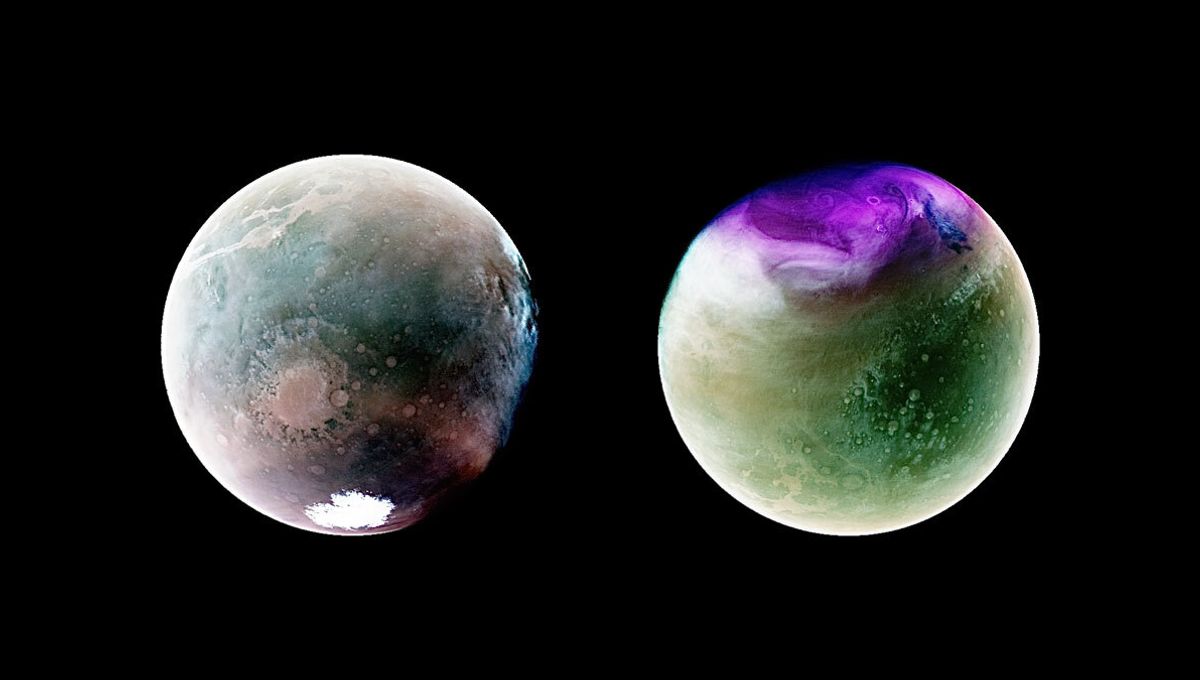
NASA’s MAVEN (Mars Atmosphere and Volatile EvolutioN) has been studying the Red Planet for several years. Its suite of instruments has provided numerous insights into the Martian atmosphere, including the peculiar ultraviolet aurorae that happen there. Now, NASA has provided us with a full global version of Mars in ultraviolet. And by Ares, it is weird and wonderful!
MAVEN’s Imaging Ultraviolet Spectrograph (IUVS) sees wavelengths between 110 and 340 nanometers, beyond the blue side of the visible spectrum. In the images, these wavelengths are shifted to colors we can see, so it is possible for us to understand what we are seeing.
And we are seeing some pretty interesting stuff. Ozone is present on Mars but in very small quantities compared to Earth’s famous layer. And yet, it can be spotted, especially over the polar regions in purple. Clouds and hazes around the planet are in blue or white, and the ground can appear greenish or tan. The images are also optimized to show the contrasts so do not think they are a perfect translation of what a human being capable of seeing ultraviolet light would be seeing.
The images were taken at two different points throughout the Martian year. The snap on the left shows the Southern Pole cap as a prominent feature as well as Argyre Basin, one of Mars’ deepest craters. A pink haze is visible inside it. It was taken in July 2022.
The picture on the right was taken instead in January 2023 and shows activity going on at the North Pole, with clouds and a lot of ozone (well, relatively) being released. The change is due to seasonal variations on the planet. Mars has seasons like Earth, but they are about twice as long given that a Martian year is about twice as long as Earth.
These spectacular images of Mars fit perfectly with MAVEN’s mission. The spacecraft, for the last nine years, has been exploring the planet’s upper atmosphere as well as its ionosphere, the place where the tenuous layer of air interacts with the Sun and solar wind.
The goal is to understand how Mars loses its atmosphere to space. This is important for many reasons. The Martian atmosphere might have been denser in the past, creating a more cozy climate (maybe even habitable), which would explain how water was able to flow on the Red Planet billions of years ago.
Source Link: Mars Is Unrecognizable In These Ultraviolet Observations